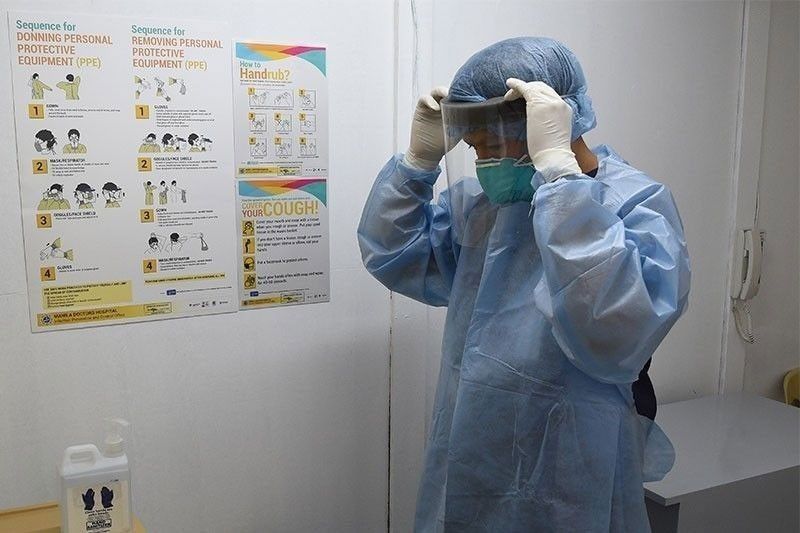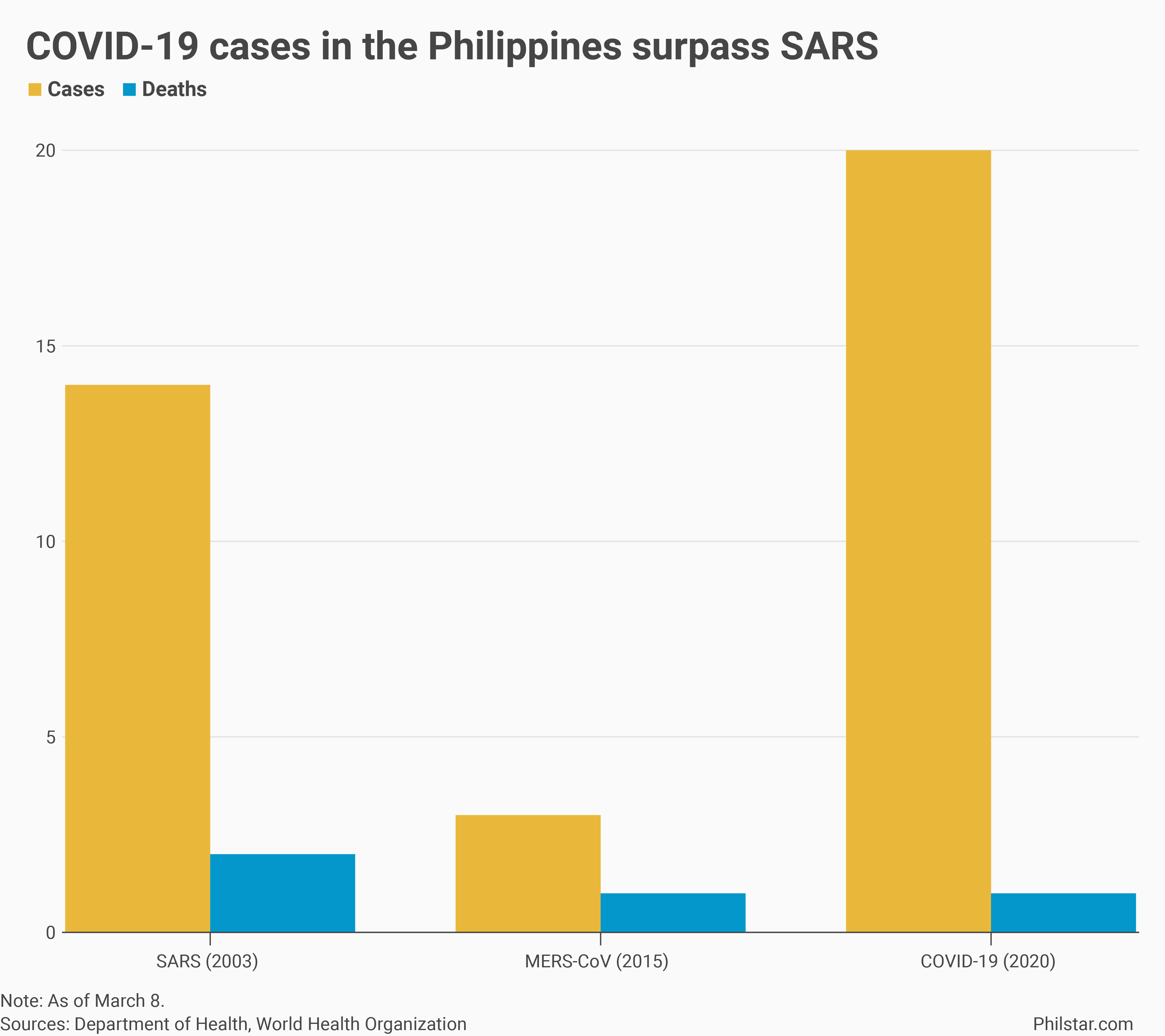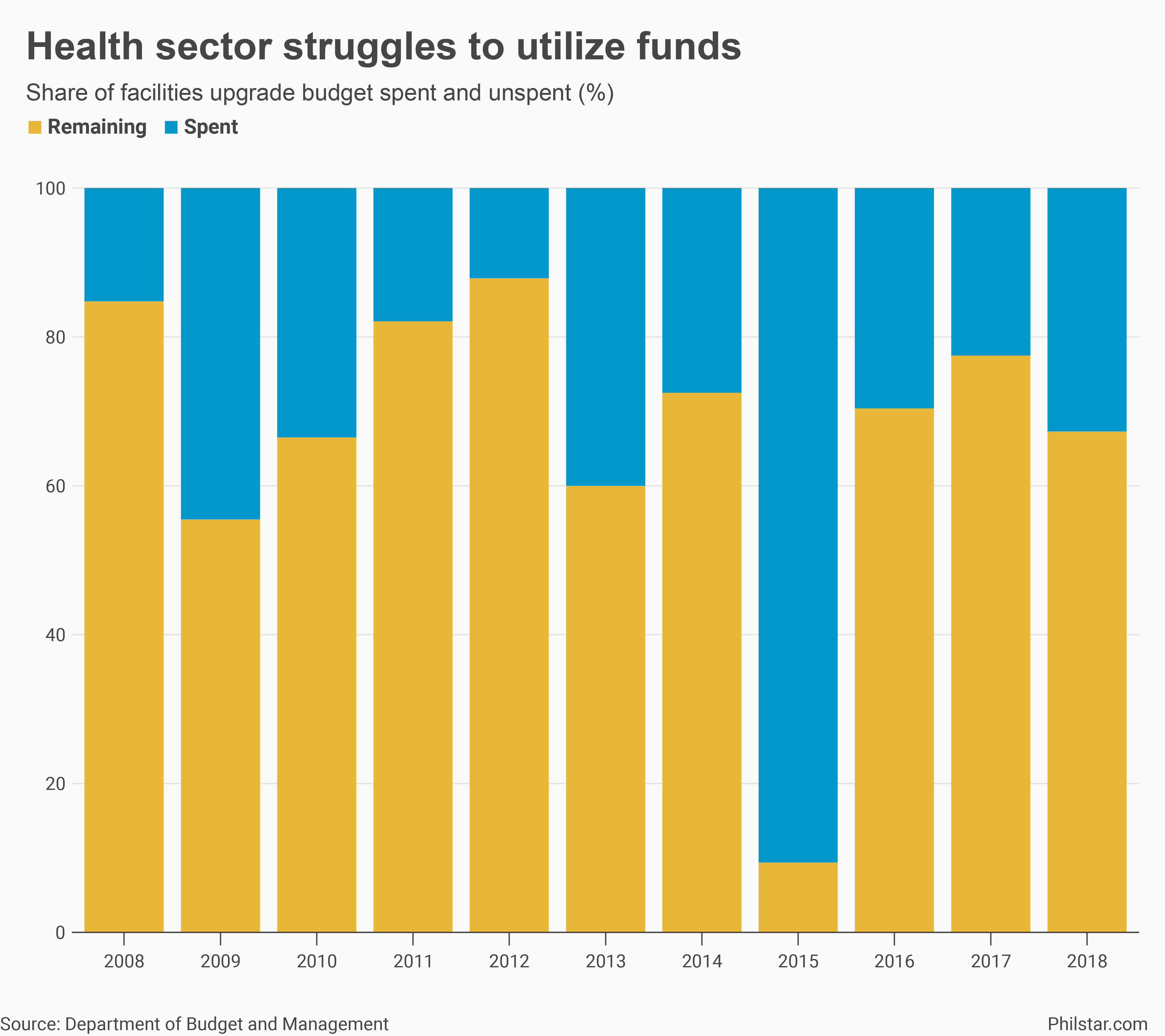With only 250 people tested a day, Philippine health sector appears ill-prepared for COVID-19

MANILA, Philippines — From slow diagnosis to understaffed hospitals, the Philippines’ long-struggling healthcare system appears ill-prepared for an escalation of a coronavirus disease 2019 (COVID-19) outbreak.
Only “about 200 to 250 people” are getting tested a day at the Research Institute for Tropical Medicine, where the country’s lone diagnostic lab for the coronavirus that causes COVID-19 is located, Health Secretary Francisco Duque III told Philstar.com.
With a suspected infection undergoing as much as four tests, RITM was only able to run 2,000 samples since January 31 when the first local case of COVID-19 was confirmed, according to the hospital’s Communication and Engagement Office. After the initial three cases—all of Chinese nationals in the country—it took Filipino health authorities a month before reporting three more confirmed cases.
The snail-paced diagnosis highlights the struggle of the Philippines facing its worst outbreak since the severe acute respiratory syndrome (SARS) infected 14 people and killed two in 2003. With 20 confirmed infections and one death, cases of COVID-19 already surpassed that of SARS, with the government already preparing for further increase amid President Duterte’s declaration of a national health emergency on Monday.

Hospitals are likewise being primed for an escalation of the outbreak, but official data showing the state of Philippine healthcare— from the number of hospital beds, nurses, as well as health spending— do not invite optimism a calibrated response is underway. Even private healthcare providers are praying the situation does not get any worse.
“While there may be fewer beds, specialized units, hopefully with the smaller number of critically ill patients, makakayanan,” Beaver Tamesis, president of the Pharmaceutical and Healthcare Association of the Philippines, told Philstar.com.
Rustico Jimenez, president of Private Hospitals Association of the Philippines, is more pessimistic. “We are praying that this goes under control. There is nothing to worry about, for as long as this does not escalate into an epidemic,” Jimenez said in a phone interview.
Limited facilities
As it is, President Duterte’s declaration of a health emergency only boosts measures already being taken: from reporting suspected cases to testing and quarantine, efforts are still highly centralized with the national government. “If we have a suspected case, we bring it to the attention of DOH (Department of Health), then testing is done with RITM. Once confirmed, infected people are confined in government hospitals,” Jimenez said.
As of Sunday however, Duque in an interview with CNN Philippines said the latest four COVID-19 patients are isolated in four private hospitals namely Medical City, Makati Medical City and St. Luke’s Medical Center in Quezon City and Bonifacio Global City in Taguig.
As for diagnosis, apart from RITM, the government is also working on establishing five testing centers in key areas like Davao and Cebu, although RITM is unsure when will the new testing kits arrive.
It remains unclear what the private sector’s participation is under a state of national health emergency— for one, the law signed last year has no implementing rules and regulations so far— or even under a code red. But for Jimenez, private hospitals can only accommodate as much in a worst-case scenario.
“Hospitals typically only have one to two infectious rooms. The government can ask us to accommodate more patients, but they cannot force hospitals to admit more. It’s not like public hospitals where we can four or five patients share a room,” he explained.
Government data showed that nationwide, there was one hospital bed serving 1,010 people in 2013, the latest year on which data is available. This is less than the one is to 1,000 ratio prescribed by DOH and way below five beds to 1,000 people recommended by the World Health Organization.
In total, local hospitals had 101,688 beds, only 47% of which were located in public hospitals which serve poor patients and where services are typically free of charge. While since 2013 much has likely improved on this front, government spending to upgrade facilities is showing otherwise.
Since 2007, the government has set aside a separate budget for its Health Facilities Enhancement Program (HFEP), but spending the fund had been a challenge in recent years. After spending 91% of the HFEP budget in 2015, the government disbursement rate fell to as low as 23% in 2017. In 2018, when the budget department re-allocate some of HFEP budget elsewhere due to poor spending, the rate improved to 33%, albeit still pointing to a lot of wasted resources.

Lack of manpower
Apart from inadequate facilities, public hospitals are also suffering from a shortage of nurses and doctors to attend to patients. No less than the DOH admitted this on its National Objectives for Health 2017-2022 report. “None of the regions had adequate public health nurses with permanent appointment to cover the entire population,” the agency said.
DOH recommends a ratio of one public health nurse to 10,000 patients, but in 2016, the ratio for the Philippines was only 0.57. Similarly, there was one doctor serving 33,000 patients, much higher than the WHO recommended rate of one to 1,000 patients.
If the COVID-19 outbreak escalates, Tamesis said “the issue would be other patients who also have needs.” “Only emergency patients would be accommodated. Elective cases would be deferred as hospitals prioritize,” he explained.
If any, the declaration of a health emergency would help speed up procurement. Budget Undersecretary Laura Pascua said under such scenario, public bidding is suspended for products and services necessary to address the spread of the virus. DOH, she said, is allowed to pick contractors of good standing from its past acquisitions.
“Time is of the essence,” Pascua said in a text message.
As more testing centers open soon, there is a likelihood that the worst is yet to come on the local COVID-19 outbreak. While Jimenez said the health sector learned from its experience during SARS, the sector needs to prepare for the worst.
“We are making our own preparation but we are hoping it does not worsen,” he said.
- Latest
- Trending





























